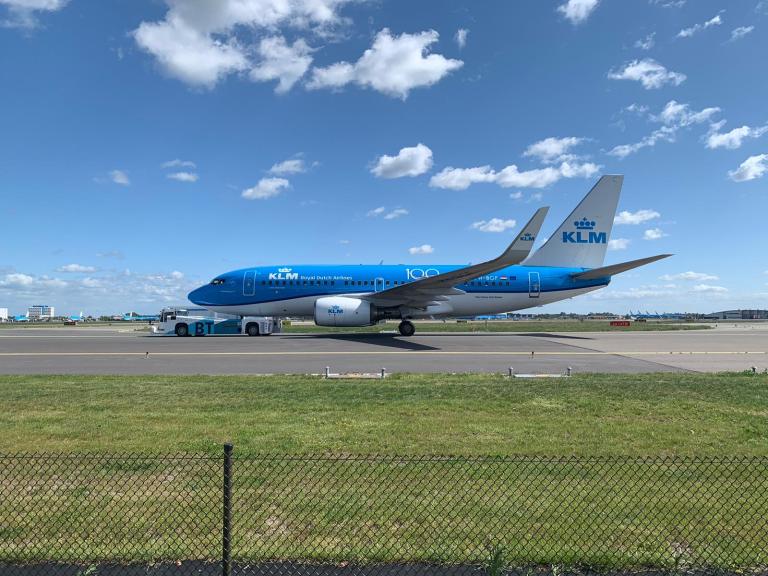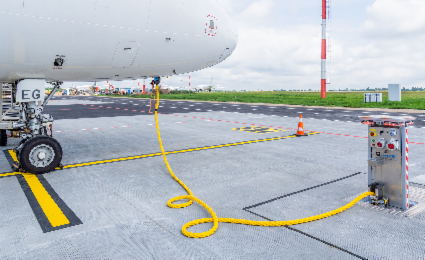

Aviation’s green transition – the role of manufacturers
As part of its environment-related studies and projects on the aviation industry’s ecosystem, Roland Berger has conducted a series of interviews with the people developing the green airports of the future. Our interview with Maxime Mahieu, CEO of Smart Airport Systems, an Alvest Group company.
(Interview conducted in July 2022)

Can you introduce yourself and describe your background?
I joined Lebrun, a company that specializes in refrigeration, after finishing my engineering studies. Its founder, Bruno Lebrun, was one of the world’s first designers of the refrigeration compressor in the late 19th century, along with Frick (United States) and Sabroe (Denmark). The company was acquired by Westinghouse in the 1960s and then by my family in the 1990s.
In 2003, I began managing the company’s operations. At a dinner party, a pilot who worked for Sabena (Belgium’s national airline) told me that he systematically used an APU to prepare aircraft on the ground; this marked Lebrun’s first foray into aviation.
We used our expertise in industrial refrigeration to create a product for aviation, just as we had done in the pharmaceutical, petrochemical and food industries (our original industry) – it involves liquid and air flows, high humidity and frost constraints and so on.
What solutions is SAS developing?
KLM was the first company to believe in us in 2004; we launched our first ACU prototype, creating a link between cabin temperature and equipment performance, something our competitors didn’t do.
Lebrun was then acquired by the Alvest Group in 2018, with the aim of creating Smart Airport Systems. The company brings together our alternative solutions to APUs: the TaxiBot and the TractEasy (an autonomous baggage tractor). We continue to develop customized industrial refrigeration solutions; in this way, we can continually test new refrigeration technologies and integrate them into our airport products.
SAS is the only company in the world to offer 3 solutions that have been given the Solar Impulse Efficient Solutions label by Bertrand Piccard and that reduce pollution in addition to being economically attractive and financially viable.
The real advantage of our solutions, particularly the APU OFF and the TaxiBot, is that they generate negative costs for airlines.
How do you see the role of airports in decarbonization and, more broadly, in terms of environmental, social and corporate governance?
Recently, I’ve seen many changes in the way in which airports approach decarbonization. The pressure is such that platforms have begun to adopt genuinely green strategies. Today, they are mobilizing their resources and pushing for the adoption of the right technical solutions.
Nevertheless, some (often private) airports continue to focus on their balance sheet rather than their carbon footprint. Today, the simplest and cheapest way to save fuel (up to 10%) is on the ground and this can therefore lead to a significant reduction in CO2 on the ground. What’s unique about our solutions is that they are financially neutral or even generate negative costs.
We focus only on the cost of the turbine on the ground (whether the APU or the main engines): fuel consumption, maintenance and now the cost of CO2 – although this is almost non-existent today, because companies have received ETS certificates at almost no cost, their stocks are running out and the cost of CO2 is skyrocketing. The cost of APUs and aircraft engines is bound to rise.
Our Zero Ground Emissions solutions guarantee savings for companies and are a significant step toward their decarbonization objectives.
What environmental initiative(s) have you launched as part of your range of products and services?
Everything we do at SAS is focused on the reduction of ground-level emissions.
In addition to replacing APUs and engines during operations on the ground, the TractEasy is our electric, autonomous baggage tractor solution that streamlines processes and reduces tractor fleets. Fast charging now makes it possible to ensure very high availability rates.
When it comes to reducing emissions, SAS prevented the equivalent emissions of 250,000 cars in 2022 and we aim to exceed 1 million by 2023.
How did you finance this/these initiative(s)?
The Alvest Group and our financial partners give us the resources to achieve our ambitions; this means that we can invest significantly in the roll-out of our solutions, particularly the TaxiBot. This unique decarbonization solution for taxiing airplanes must be used by airport operators, because it involves a disconnection point, the return of machines via service roads in cooperation with ATC and pooling to guarantee cost neutrality by offsetting the additional labor costs incurred because of the tractor driver’s on-board presence.
Schiphol Airport is ahead of the game in this area because it has a clear understanding of the issues and a genuine desire to decarbonize its operations on the ground. The aim is to roll out a hundred Taxibots at AMS by 2030.
What are your greatest challenges for the next decade?
Pilots really want to reduce the carbon footprint of the aviation industry – they are open to and supportive of any solution that reduces its impact. We provide systems that enable them to communicate and take control of our solutions.
Airlines’ processes present a challenge; for a long time, they operated by buying machines and using them infrequently or poorly. Although negative-cost solutions do exist, our greatest challenge is the shift that’s required within the airline industry. However, we are finding that airlines are now much more open to change.
Aside from decarbonization, for the rest, for reasons of risks and arduousness, the immediate future is probably ground rotation with one person for a short-haul flight and two people for a long-haul flight, using an autonomous baggage tractor, with automatic loading on dollies and a loader that lifts and loads automatically.





